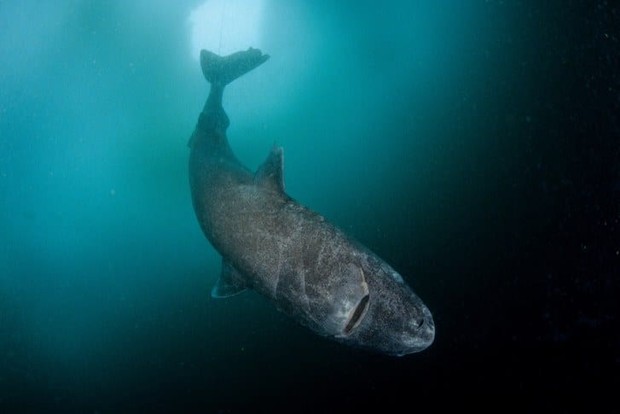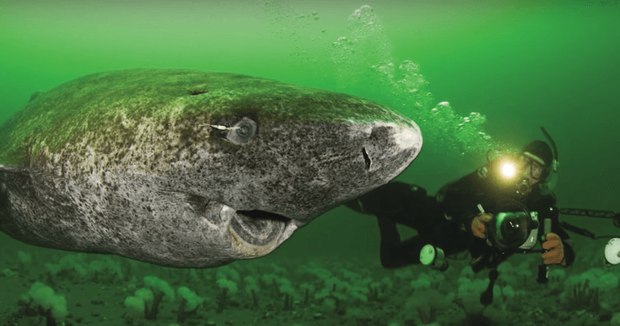Read carefully, the millennium – 1000 years, it means that this creature lived for more than 500 years. And that’s the Greenland shark.
The fact has proven that while species are to be killed on their own, there are many wild creatures that have a longer life expectancy than humans.
In humans, 80 years is considered very long. But sea turtles, they can go through 100 years. Whale? 150 years!
But have you ever thought that there are creatures that live more than 500 years? Does that mean more than half of this millennium? But it’s true, there are sharks in Greenland.
The Greenland shark belongs to the family of “sleeper sharks”, the most feared predator in the Arctic thanks to its giant body as large as the white shark. They feed on groundfish and can even handle seals with ease.
But the biggest mystery about Greenland sharks is their terrible longevity. Like the fish in the photo above, it was discovered in 2017 with a confirmed lifespan then … 512 years. In other words, they are the oldest vertebrates on Earth today.
Previously, scientists didn’t have much information about Greenland sharks because it was difficult to track them. Until 2017, they got a rare film by attaching a camera to other creatures, then solving many mysteries.
Their long lifespan comes from the fact that they are the fastest growing species on the planet. The maturity of Greenland sharks is up to … 150 years. You’re not mistaken, and that means a shark our father’s age is still very young in this fish population.
Talk about the fish in the photo again. 512 years old, which means his birth is in the early 16th century, and he is older than William Shakespere. The question is, how does science determine this number?
It turns out the answer is right in their eyes. The concentration of carbon radiation in a shark’s eye can reveal age, and the results suggest that it is currently the oldest species. And even thanks to the Greenland sharks, the method of measuring age with carbon radiation is gradually gaining scientific recognition.
In the past, the comparison of body size over time was considered a criterion for determining the age of an organism. But because of this, the calculations just stop at the estimate, but cannot get the exact number. In addition, tracking Greenland sharks is extremely difficult. At the time of filming, the sharks were enjoying the cold North Atlantic, but it was not their preferred environment.
In addition, a long life is not too favorable for sharks. While the 150 year old fish are terrifying with their superior hunting abilities, the group of “old fish” are very slow, difficult to find food, the body is dense with parasites. They even have to eat scavengers to relieve their hunger.
Today, the terrible longevity of the Greenland shark is still of great interest to the scientific community. Experts are eager to analyze the genome of this animal, in order to answer the question: how do humans live forever.




